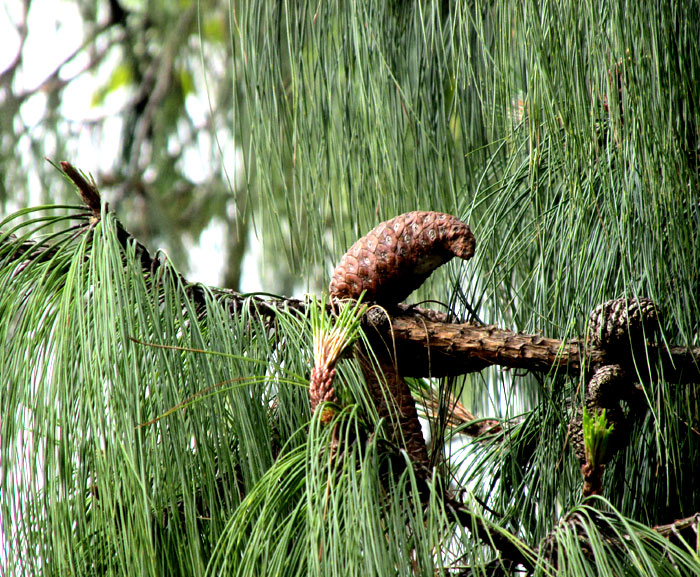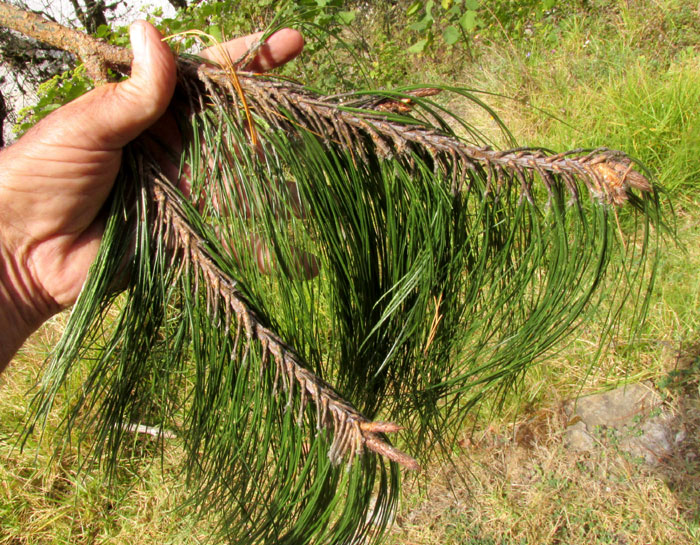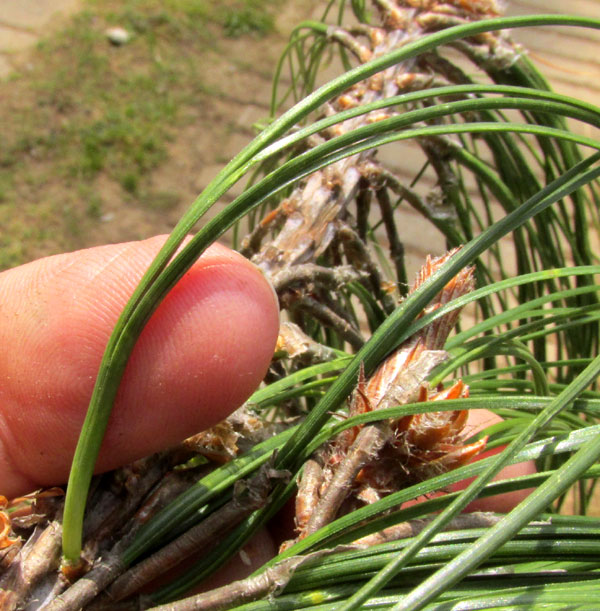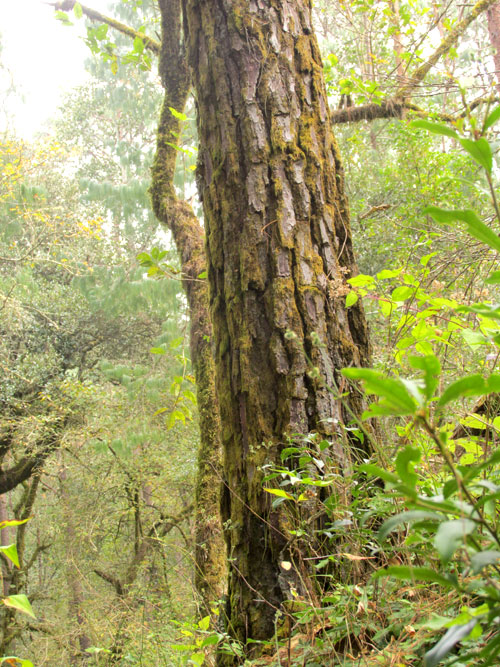Excerpts from Jim Conrad's
Naturalist Newsletter
entry from field notes dated January 19, 2023, taken along steep, one-lane gravel road ascending forested, northeast-facing mountain slope, elevation ±2,380m (7,800 ft); bedrock of Cretaceous limestone; on the south side of Pinal de Amoles, Querétaro state, MÉXICO, (N21.134°, W99.629°)
MEXICAN WEEPING PINE

On this slope the main tree is a pine, and it's the only pine species to be found. As shown above, even at a distance it's easy to see one of this species' most characteristic features: Its drooping leaves.

The groups, or fascicles, of leaves cluster at the tips of thick, scaly stems, and the leaves themselves curve downward. In pine identification, a critical fieldmark is the number of leaves in each fascicle.

In the above photo, the topmost fascicle produces four leaves, while other fascicles appear to have three or four. Sometimes fascicles of five were found.

Several cones arose in whorls at various points on the trees' stems. At this season, most cones appeared to have been gnawed on, probably by squirrels. The cones appear to have no stalks, or peduncles, and are very hard to remove from the stem. On the cone exiting the above image's left side, the pointed items on each scale are called umbos. In this species the umbos arise on the scales' top, or dorsal, face, not at the scales' tips, as in many species, and they're low and broad.

Our tree's bark consisted of large, elongated plates separated from one another by deep fissures.
All the above features and more point to PINUS PATULA, bearing various English names, including Mexican Weeping Pine. A distribution map at the conifers.org website indicates that this species is endemic to only a small part of Mexico, mainly the higher mountains of the Eastern Sierra Madres, and this part of Querétaro state is included within the species' home area. That's noteworthy, because Mexican Weeping Pines are much planted in numerous countries, sometimes becoming invasive. They're planted for wood and cellulose production, erosion control, for carbon capture, and sometimes as street and park trees. You can see the extent of its occurrence worldwide on the GBIF Pinus patula page. In Hawaii it's replacing native alpine grassland.
The Atlas de las Plantas de la Medicina Tradicional Mexicana tells us that medicinally the tree has been used for respiratory problems, including the cough. In fact, wherever pines of any kind occur, it's likely that traditionally pine needles were mixed into boiling water, then the vapors inhaled. As a kid I did that in Kentucky, though it wasn't clear whether the unclogging of my lungs and sinuses resulted just from inhaling the steam, or if the pine needles helped.
Two varieties of Pinus patula are recognized. With our tree's seemingly stalkless, hard-to-remove and broadly egg-shaped cones, our tree is the "type" variety, variety patula.